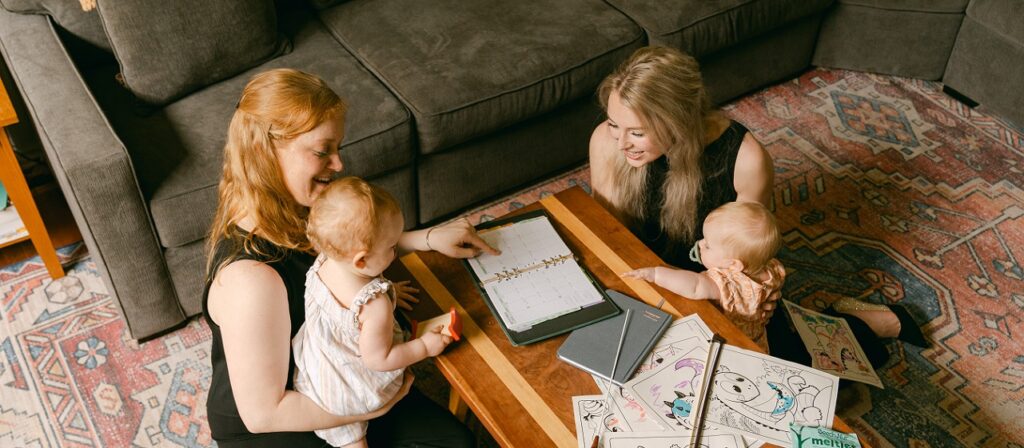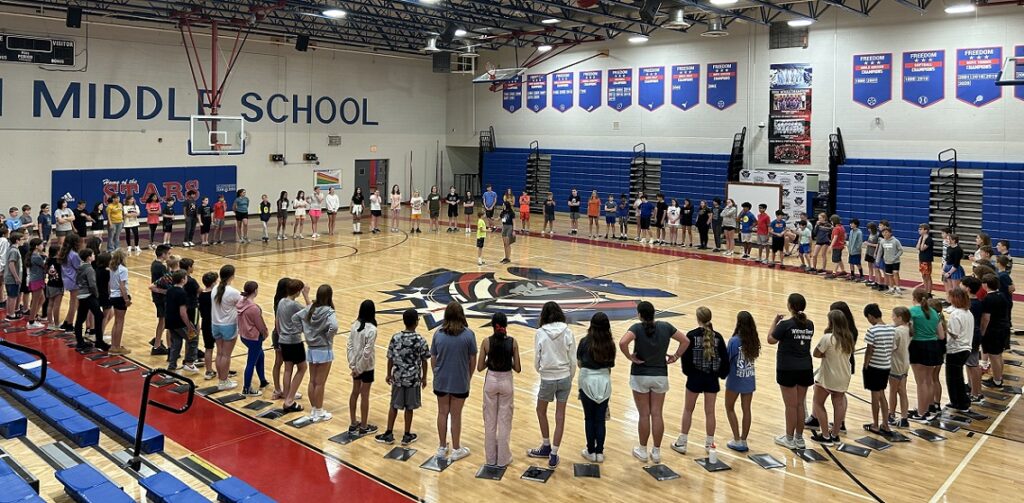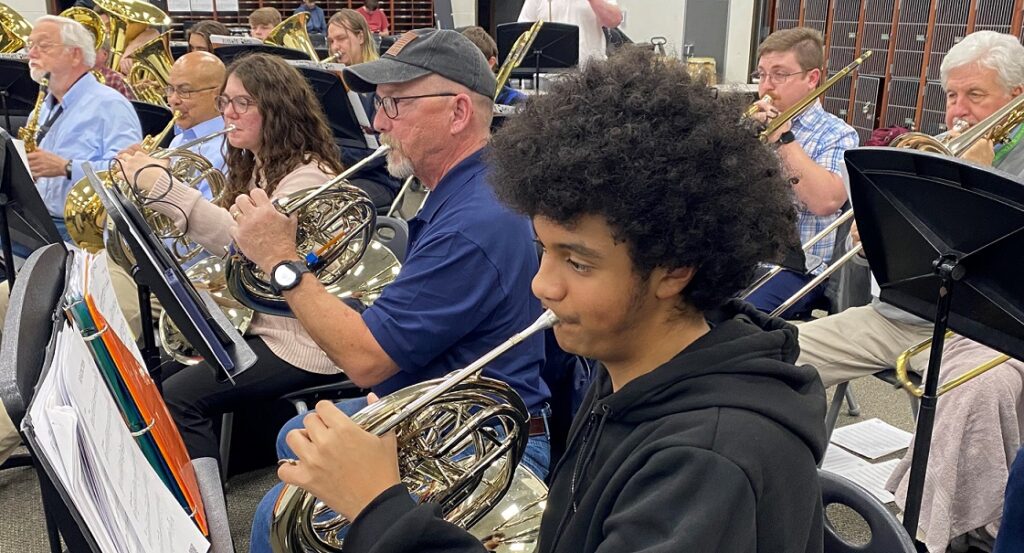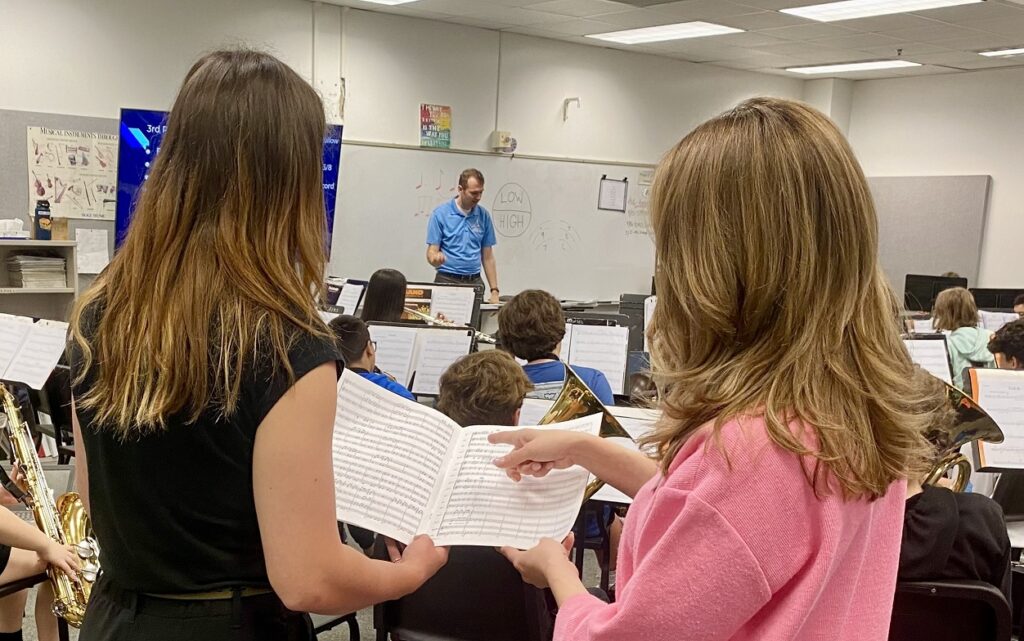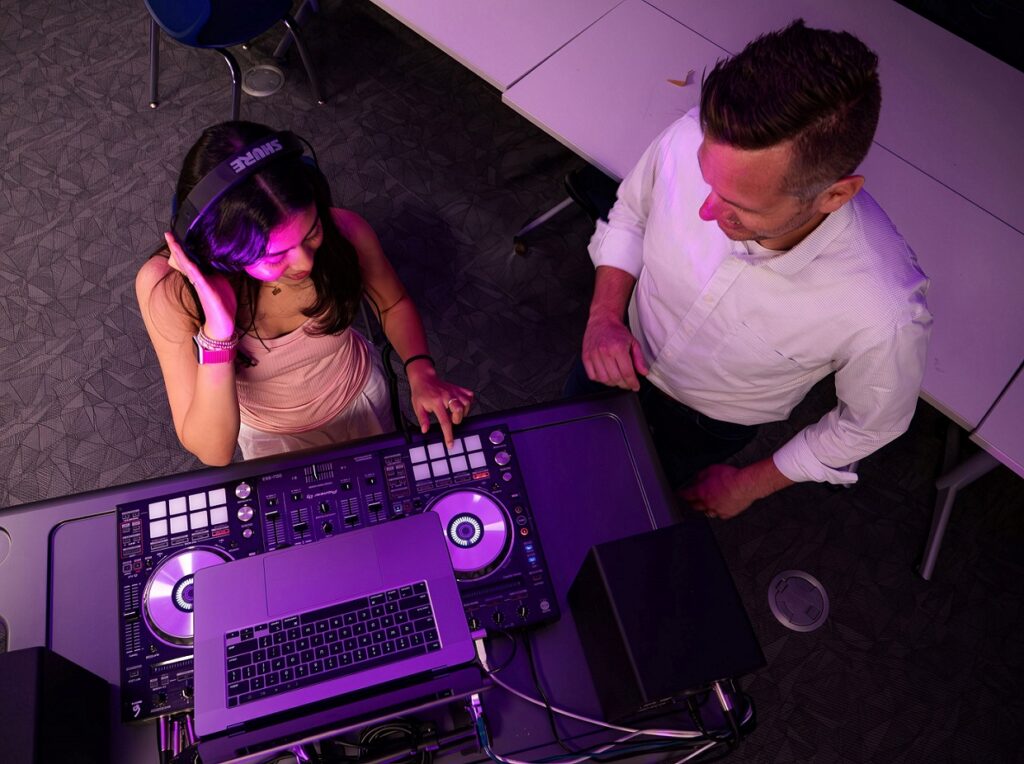Tagged Under:
Interdisciplinary Development Between the Arts
West Covina High School’s Performing Arts Academy allows students in music, dance and theater to hone their skills across disciplines and work together.
When the pandemic of 2020 caused schools across America to close their doors, West Covina High School in California was in the midst of developing a new program that had been years in the making: the Performing Arts Academy, which provides additional learning opportunities for students studying instrumental music, voice, dance, acting and theater tech. Before COVID hit, West Covina had already started the process of taking student applications and scheduling auditions for the academy. As a result, the administration said they should begin the program virtually. “That was our soft opening,” says Tyler Wigglesworth, choral director at West Covina and director of the vocal discipline (which is referred to as a pillar) for the academy.
Now that school has been back to in-person instruction for nearly three years, the Performing Arts Academy is finally evolving into the program that Wigglesworth and others had envisioned. West Covina already had thriving music, dance and theater departments — but the academy gave the school a place where these departments could come together. “Our idea was to bring an academy where students could select a major when they audition,” Wigglesworth says.
The academy, which is publicly funded as part of the public school system, is open to auditions from incoming 9th and 10th graders within the West Covina Unified School District — or any other school district, though acceptance into the academy would require an outside student to go through a transfer process. During the past four years, the academy has grown substantially, beginning with only six students in 2020 and now with 36 students for the 2023-2024 school year. “Our hope is that in the next five years, we will surpass the 100-student mark … with 25 students in each pillar,” Wigglesworth says.
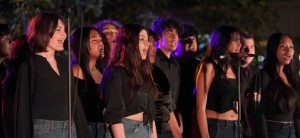
Inspired by Alumni
Wigglesworth says that West Covina’s alumni were a major source of inspiration for building the program. During his first couple of years of teaching at the school, he noticed how collaborative the students could be when putting on a production. As the music director for the school musical that year, Wigglesworth worked alongside the choreographer/dance director and the theater director, and he realized how crucial it was for vocalists, actors and dancers to work together. “It’s this collaborative experience,” he says. “We had students sharing in all our disciplines pretty rigorously. Students who in their senior year, would take a dance class, a choir class, a theater class and marching band.”
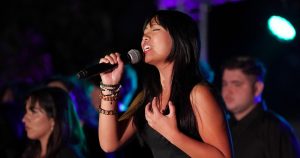 Wigglesworth says that taking all these classes together was making the students not just better performers and musicians, but also better overall learners. Though these students have now graduated, their legacy includes their inspiration for the Performing Arts Academy. “These alumni, they were hungry, they wanted this,” Wigglesworth says. “They started to paint a picture of what could be a reality — and that was the academy.”
Wigglesworth says that taking all these classes together was making the students not just better performers and musicians, but also better overall learners. Though these students have now graduated, their legacy includes their inspiration for the Performing Arts Academy. “These alumni, they were hungry, they wanted this,” Wigglesworth says. “They started to paint a picture of what could be a reality — and that was the academy.”
These overachieving students inspired Wigglesworth and other faculty at West Covina to turn this interdisciplinary approach into an officially structured program. “This formality of creating a structure where you’re developing the whole performer was happening very organically, but now we [were] going to give it a bit more structure, and through that structure, provide even more opportunities,” Wigglesworth says.
These additional opportunities came in the form of scheduled private lessons, workshops with teaching artists, visits from industry professionals and so much more. According to Wigglesworth, industry professionals and trained educators each have something unique to offer. “We are firm believers that the development of these performers cannot be done without a trained educator,” he says. “Teaching artists may not be educators … they’re professionals who have worked in the performance arts industry. Through that, we’re asking them to bring their wealth of experience into the academy and add another layer to the pedagogy.”
A Busy Schedule
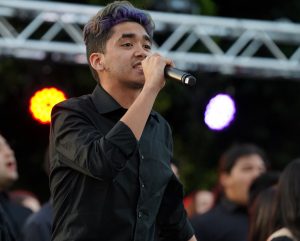 Students involved in the Performing Arts Academy must fit all their private lessons and extra performances into their existing school schedules, which include all traditional school requirements. “Their schedules are pretty jam-packed,” Wigglesworth says.
Students involved in the Performing Arts Academy must fit all their private lessons and extra performances into their existing school schedules, which include all traditional school requirements. “Their schedules are pretty jam-packed,” Wigglesworth says.
While working as the director of the academy’s vocal pillar, Wigglesworth, who was recognized as a 2023 Yamaha “40 Under 40” music educator, also serves as the program’s coordinator. Each year, he meets with all academy students and their academic counselors to work out an efficient schedule. “They need to meet all graduation requirements for high school [and] be eligible to apply to any college of their choosing,” Wigglesworth says.
In addition, all academy students must take an ensemble class within their discipline: a vocalist must take a choir class, for example. During seventh period on Mondays and Wednesdays, academy students take a “professional practices” class, which could include workshops from professional teaching artists, lessons on how to professionally audition, and more. Mondays and Wednesdays are also when academy students take their private lessons. On Tuesdays and Thursdays, academy students meet for the school musical; all academy students are required to participate in the musical in some capacity.
Outside of school-day classes and musical rehearsals, Performing Arts Academy students also put on a plethora of performances. Each school year includes two academy-only showcases, at the end of the fall and spring semesters. These showcases include both solo recitals and group performances.
Additionally, academy students perform with their ensemble classes. For example, students in the vocal pillar must perform with the choir department in its seven yearly shows. Beyond those shows, students are also expected to perform in more professional, outside-of-school settings as well.
Professional Performances
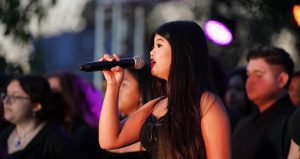 Because West Covina is located in Southern California, faculty have developed working relationships with professionals from The Walt Disney Company, which provides students with additional workshop opportunities.
Because West Covina is located in Southern California, faculty have developed working relationships with professionals from The Walt Disney Company, which provides students with additional workshop opportunities.
For example, Wigglesworth has brought choir students onto Disney’s Imagination Campus. “We’ve been test choirs for them,” he says. “These types of performances [are] looking at how we can push into the industry as much as possible. I don’t believe the West Covina High choral department should exist in just the four walls of any given classroom; it needs to be out in the community, us working with industry professionals, so our students are getting a well-rounded experience.”
By securing performance opportunities within the West Covina community, including in collaboration with big companies like Disney, Wigglesworth aims to introduce choral department and academy students to the variety of career paths available to them. “There are so many niches in the performing arts industry,” Wigglesworth says. “You can find that niche and have a great career, be fulfilled as an artist and also make money.”
Interdisciplinary Development
While Performing Arts Academy students focus their studies in a specific major, they are also required to take classes in the other pillars, or disciplines. According to Wigglesworth, an interdisciplinary approach helps them become a more well-rounded performer. “There’s something for an instrumentalist to learn from taking a vocal or dance class,” he says. “The skills a vocalist can get from an acting class will make them a better vocalist.”
When auditioning for the academy, students apply solely for their intended discipline. Even if they aren’t skilled in the other pillars, learning the basics will help them gain stage presence, more overall performing experience, and a better understanding of the skills their classmates are developing.
The yearly school musical is where all academy pillars come together. The theater teacher directs and leads the production, the dance teacher choreographs, the instrumental music instructor plays with the instrumentalists in the pit, and Wigglesworth musically directs the show.
“No matter what role you are playing or intending to play, every goes through the audition process,,” Wigglesworth says.
Building Toward the Future
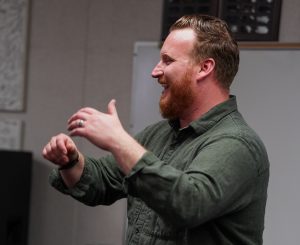
As the Performing Arts Academy grows, Wigglesworth and the rest of the faculty have big plans for the future, and some of those plans are starting this academic year. Because the 2023-24 school year will include the academy’s first class of graduating seniors, this coming year will welcome the first senior jury process. “Seniors present solo or small-group works before a panel,” says Wigglesworth. “We bring some teaching artists into that senior jury to give feedback. They’re presenting in front of people who might hire them at some point in their career. [We’re] trying to bring the industry into the academy and bring the academy to the industry.”
Building a future for the academy has also included some literal building. Construction is underway for a Performing Arts Center, which will include a main theater with a full stage, orchestra pit and about 630 seats. “We’re pushing the boundaries of what’s expected at the high school level,” says Wigglesworth, noting that the new Performing Arts Center will “rival most colleges.”
Because West Covina sits in between Orange County and Los Angeles, Wigglesworth hopes that this new building can attract some professional musicians, actors and dancers to perform in town.
The Performing Arts Center will also include a black box theater, a scene shop for building props and sets, a full dance studio and an acoustically tuned choir room that can double as a recording space. Through the ClearCom and Dante systems, this new building will fully sync with the instrumental music building across campus.
Previously, many performances at West Covina took place outdoors, in the cafetorium or in rented facilities. “Now we’re going to have this space that mirrors [our] quality,” Wigglesworth says.
Outside of hosting new performances, Wigglesworth notes that he’s especially excited for West Covina alumni to come back for a visit and stand on the new stage. He wants to tell them, “It’s because of you.”










